-
One year in the life of a tree is divided into two layers: the summer wood and the winter wood. The elemental forces of each season demand different densities of wood, as well as produce different growth rates. Sandblasting highlights this distinction by removing the layer which is softer. Sandblasting is an exploratory and destructive process. It strips the layers of material apart from one another, allowing the viewer to experience the history within the wood. This captures the material in a singular moment in the cycle of growth and deconstruction; one which also expresses its recurrent existence in totality. The destruction of the wood creates a suggestive change in the identity of the material. I used this new identity in a series of works.
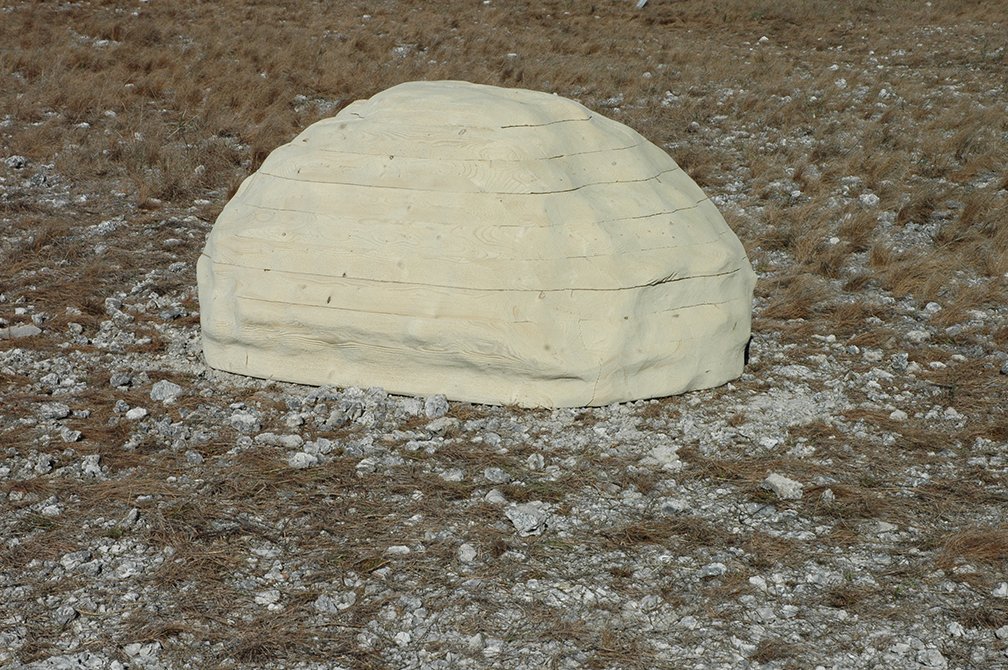
Boulder, 2007. This boulder indexes its surrounding environment, allowing elemental forces to decide the identity of the boulder through growth and decay. Over time, the simulated will become more and more corrupted by the natural, until the boulder becomes completely indistinguishable from its surroundings. The construct is made of spruce, a wood that is especially sensitive to environmental conditions. It becomes a record of where it has been through changes in its surface and form. The boulder is always situated in the same orientation relative to the sun, so that each side of the boulder is exposed to consistent light conditions. The rough sandblasted surface thereby becomes a host for growth, while the cavities in the hollow boulder host whatever animals and plant life find it.

Boulder detail. Aged in the outdoors
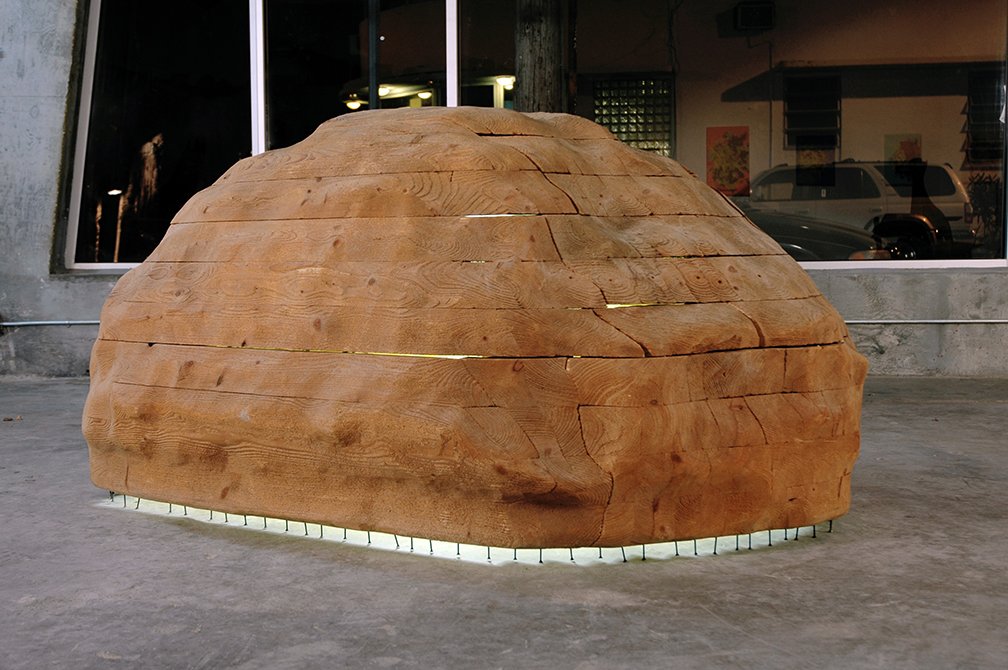
Boulder detail. When displayed indoors, the boulder is illuminated internally. The light exhibits the extent of its decay. As the wood warps, cracks, and rots, more and more light shines through.
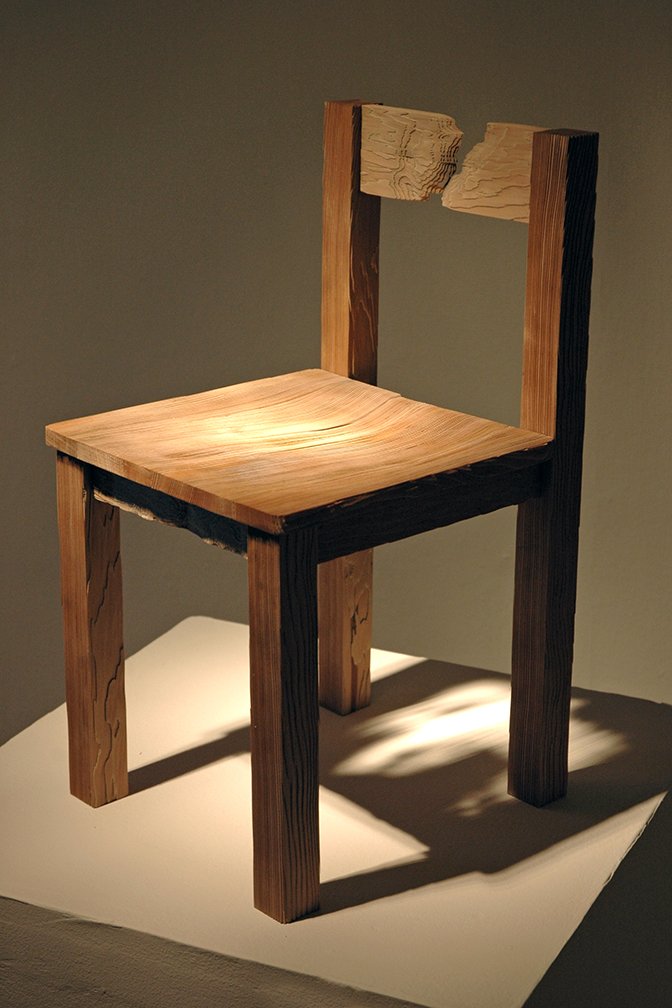
Commemorative Schoolchair, 2006
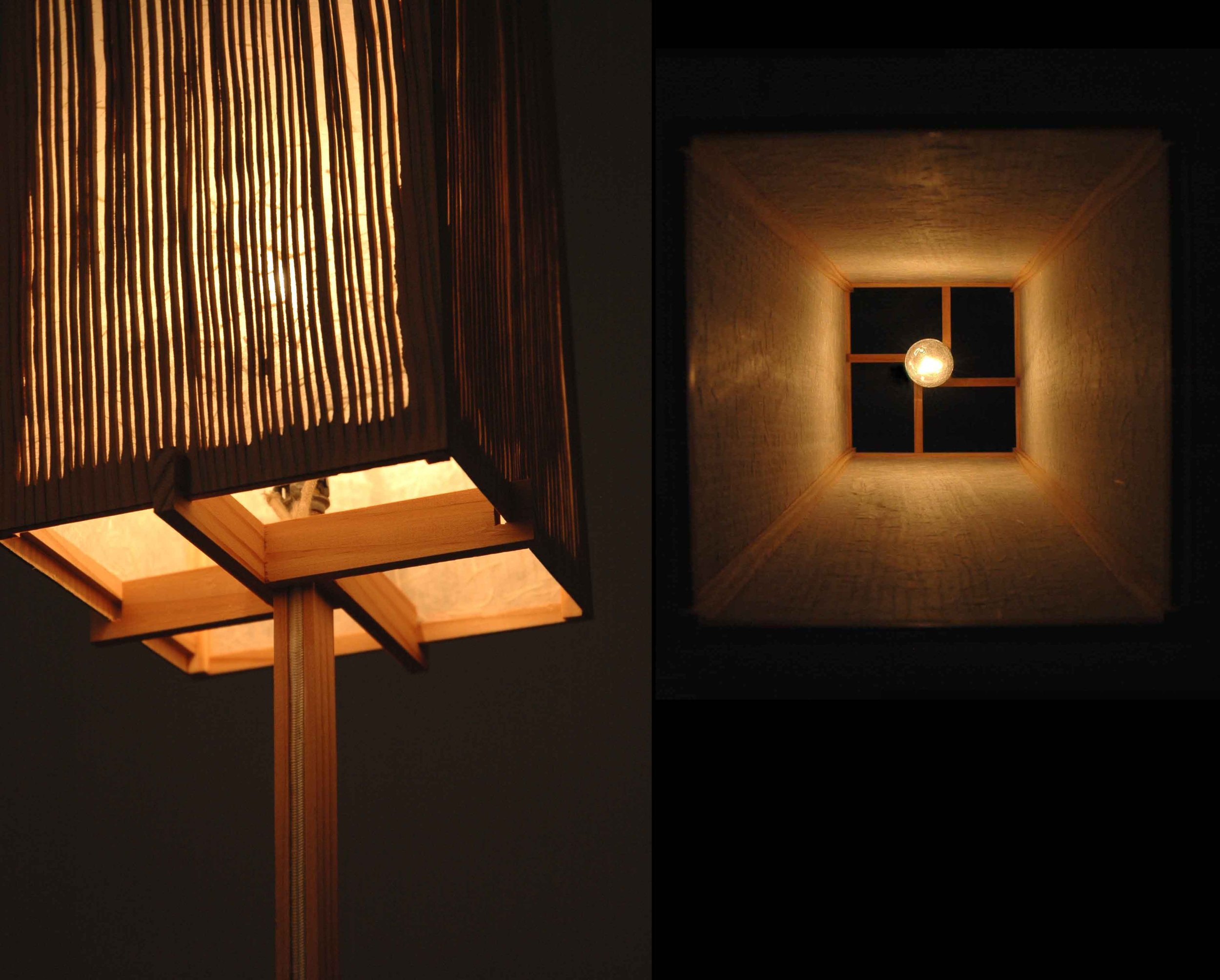
Sandblasted Lamp
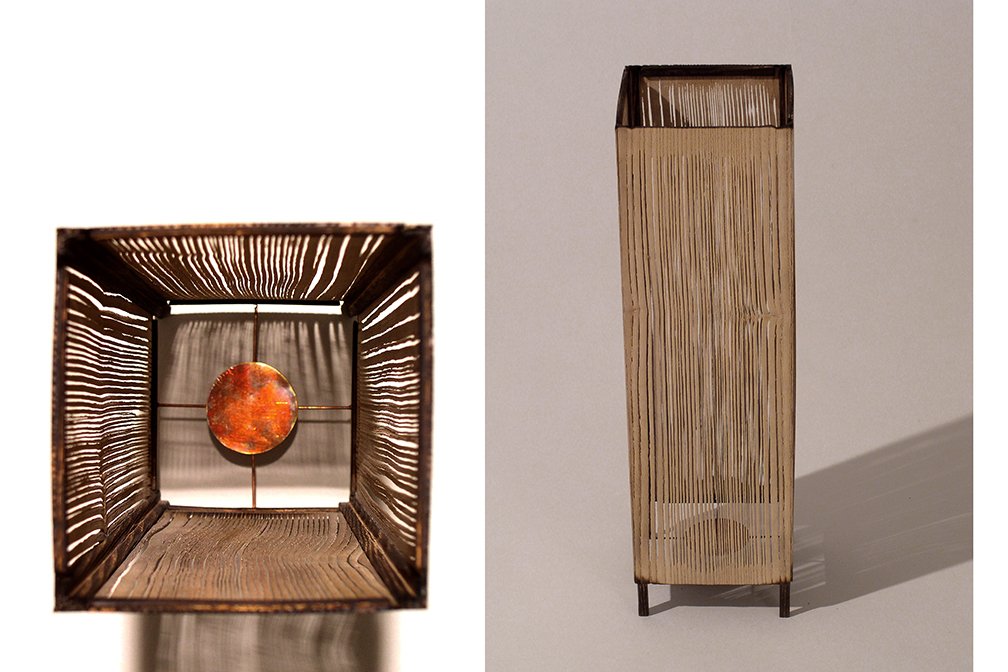
Sandblasted candle lantern
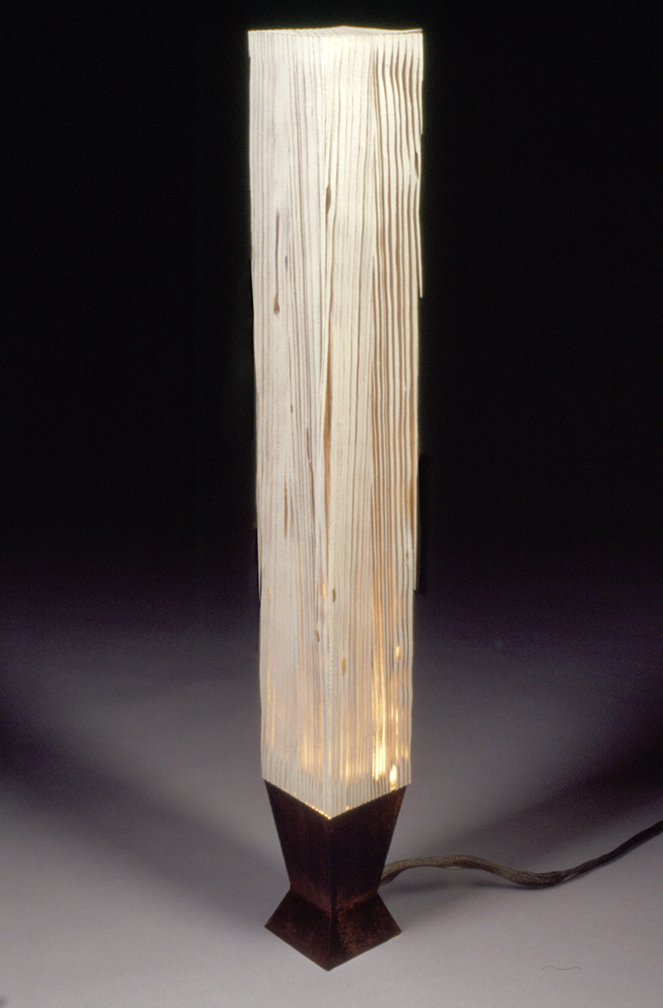
Sandblasted lamp
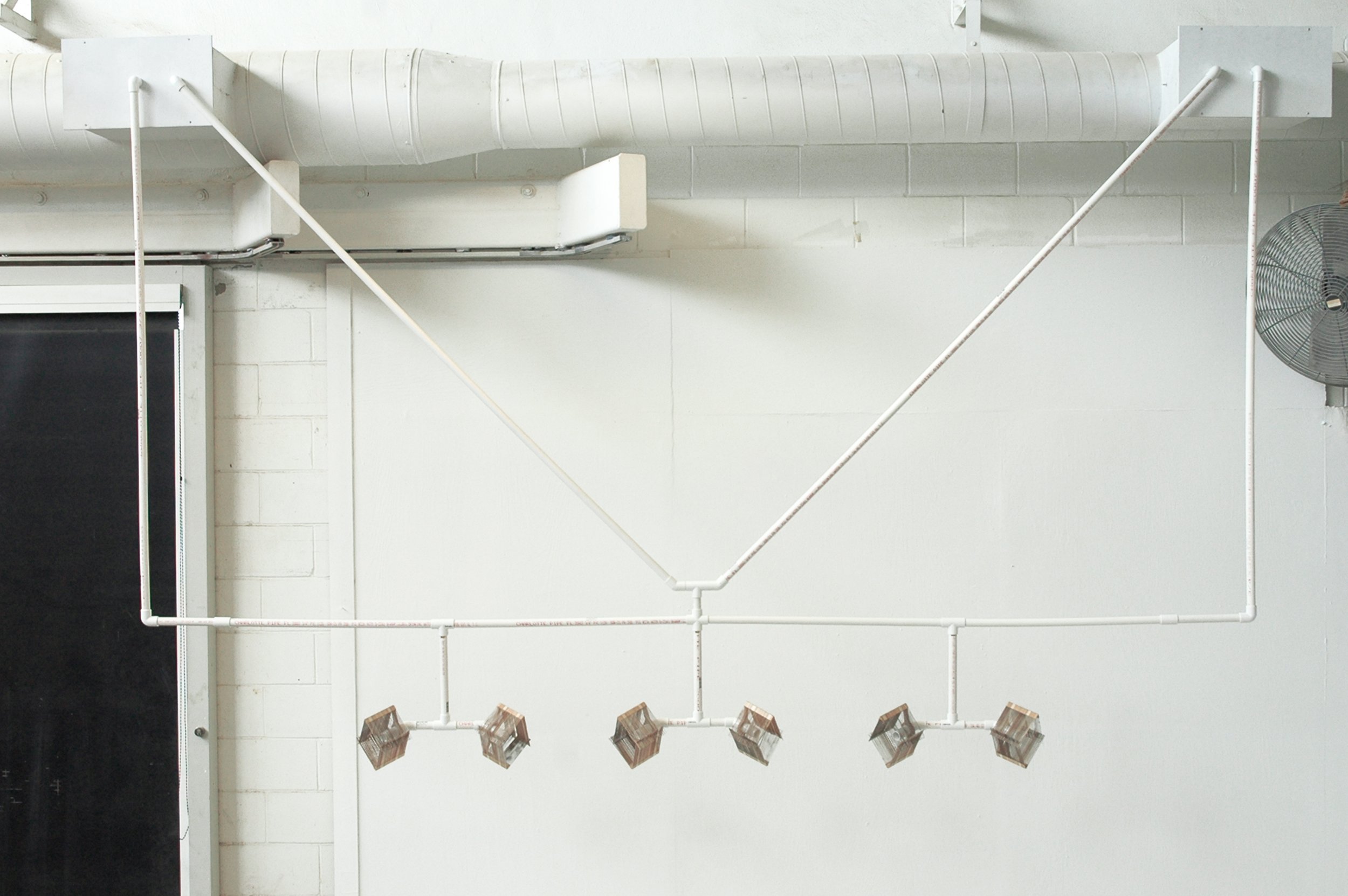
Lungs (Artery). The Artery series approaches ideas of consumption and necessity by enhancing existing utilities within a building. The passage of air through ducts into one’s space is modified with appendages that heighten the sounds and speed of the air. The normally neutral breeze that exits a vent above ones head can become a personal experience at eye level. Each augmentation in the duct is geared toward creating a sensory experience of aural, visual, tactile, and olfactory vibration.
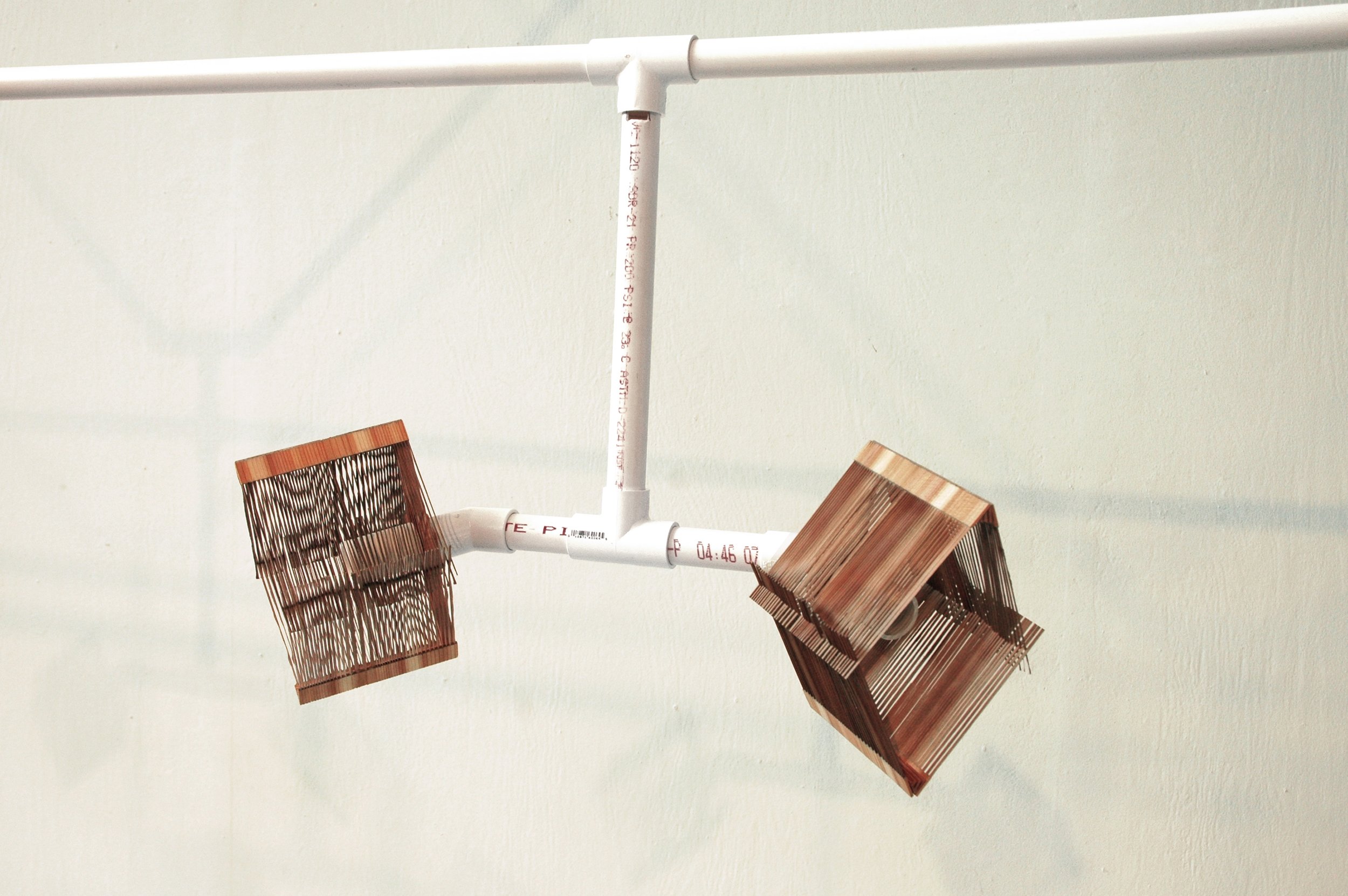
Lungs (Artery) detail. Three pair of sandblasted wooden lungs create a congruent pitch that, when experienced, simulates the vibration of monks chanting. The A/C ducts power this musical wind installation

Cabinet (Artery). Interactive sound, the cabinet can be opened and closed to change pitch of the hum or silence it completely. As the cabinet is opened further, the cedar that it is constructed from creates a progressively stronger fragrance. The cabinet itself is roughsawn on the exterior, and surfaced and sandblasted on the interior, resulting in contrasting ridged and furred textures.
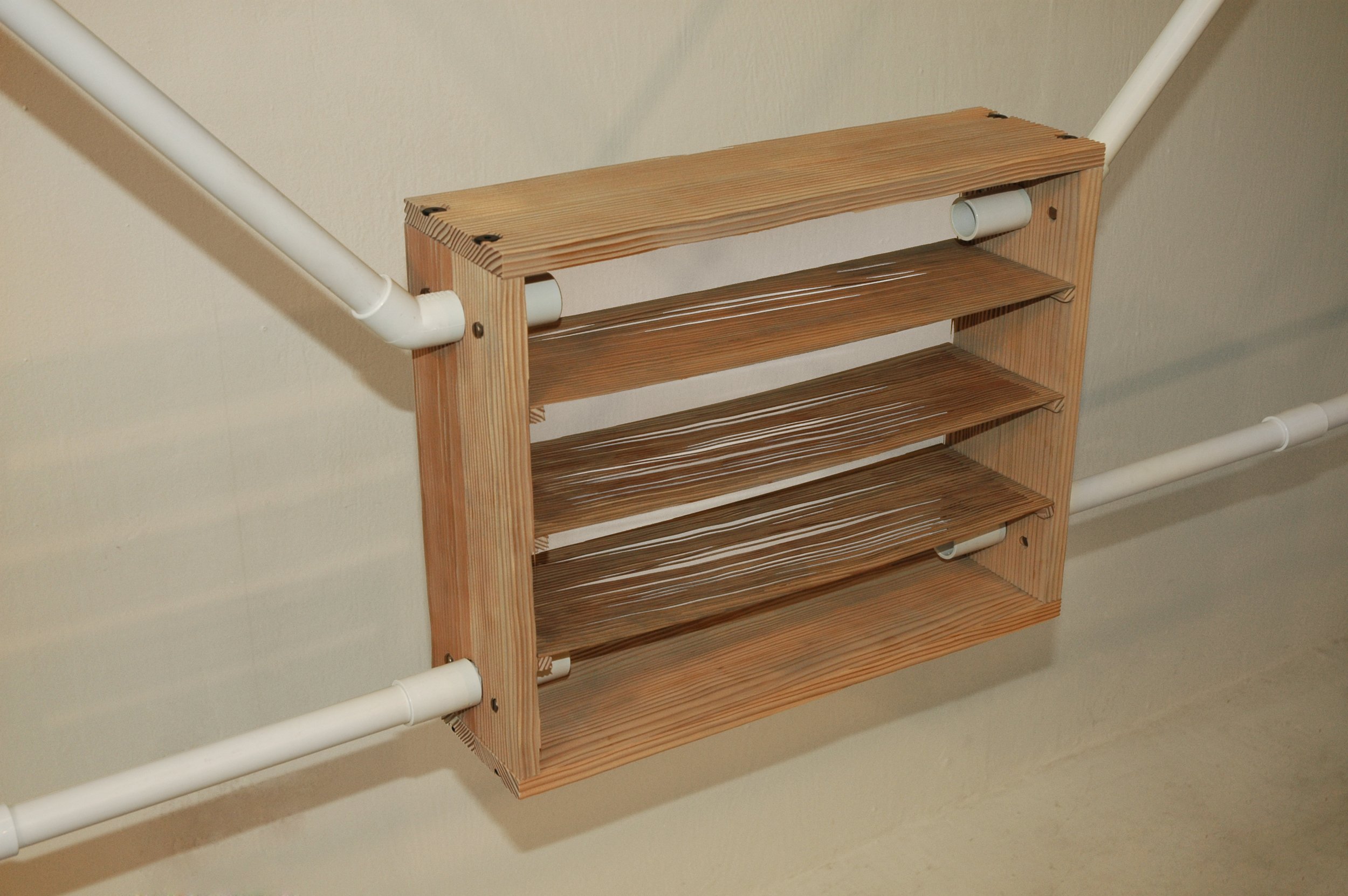
Shelf (Artery)
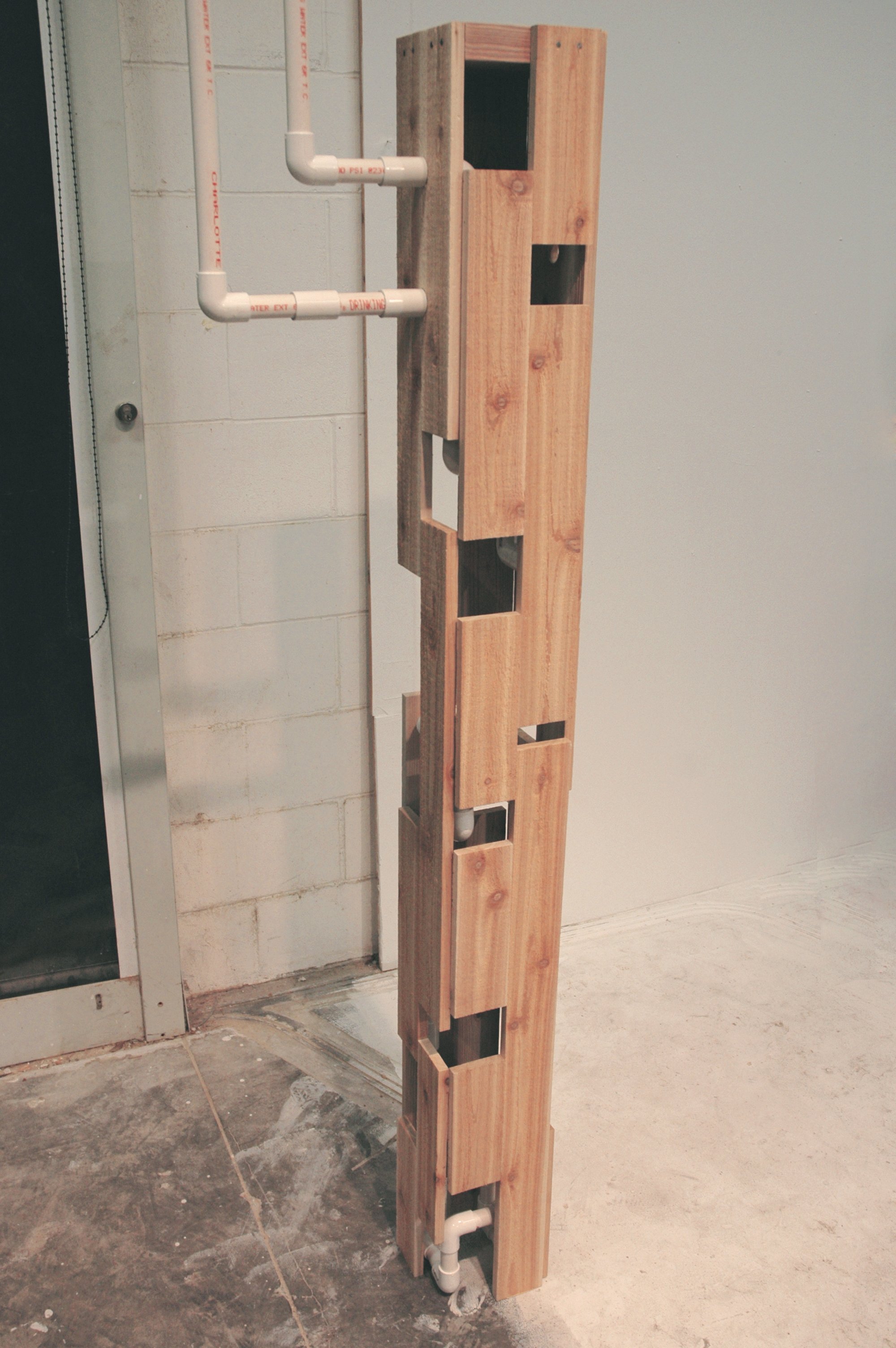
Plumb (Artery)
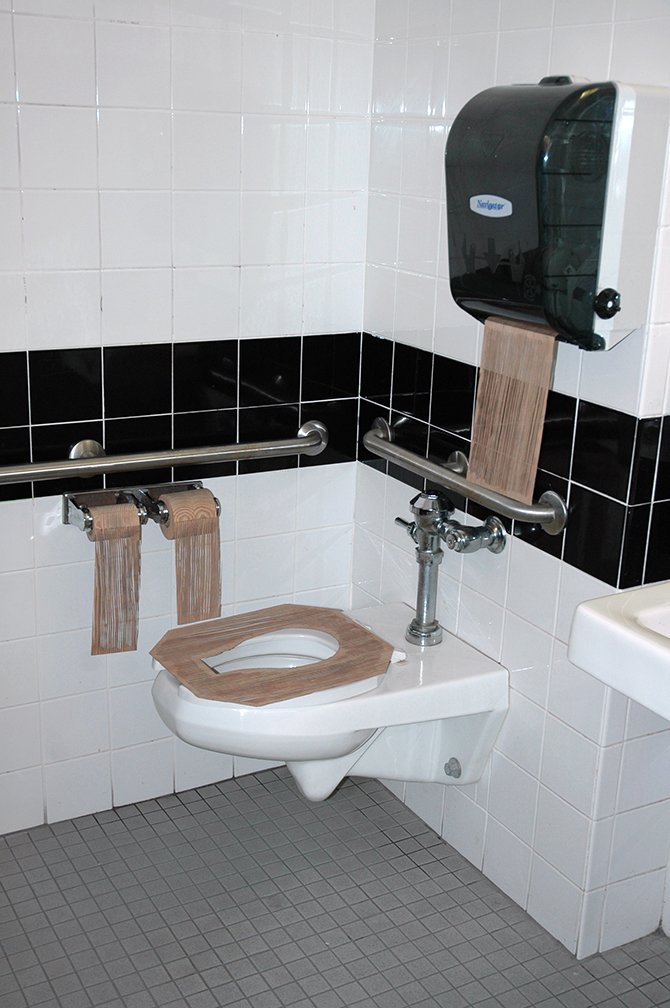
Apportionment installation
